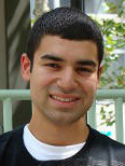Extranodal diffuse large B-cell lymphoma with monoclonal gammopathy: An aggressive and primary refractory disease responding to an immunomodulatory agent Journal Article
| Authors: | Mondello, P.; Pitini, V.; Barresi, V.; Brea, E. J.; di Mirto, C.; Arrigo, C.; Cuzzocrea, S.; Mian, M. |
| Article Title: | Extranodal diffuse large B-cell lymphoma with monoclonal gammopathy: An aggressive and primary refractory disease responding to an immunomodulatory agent |
| Abstract: | Background: Although the clinical outcome of patients with diffuse large B cell lymphoma (DLBCL) has been improved by the addition of rituximab to standard chemotherapy, almost one-third fails or relapses after first line treatment. The presence of monoclonal gammopathy (MG) is a known adverse prognostic factor for DLBCL. Because this subset of patients does not benefit from R-CHOP, new therapeutic options are required. Herein, we report the first case of extranodal DBCL of the lung with a concomitant MG who achieved a long lasting complete remission with lenalidomide. Case presentation: The 73-year-old male patient presented with lateral cervical lymphadenopathy, B symptoms, lactate dehydrogenase and beta2-microglobulin elevation. Computed tomography (CT) showed mediastinal lymphadenopathy and bilateral lung involvement. Biopsy of both disease locations revealed the presence of DLBCL. Successive bone marrow trephine biopsy proved the presence of concordant DLBCL involvement. At the time of diagnosis, a MG was present as well. The patient did not respond to the standard treatments, and subsequently underwent lenalidomide 25 mg/m2 days 1-21 q28 plus dexamethasone 40 mg days 1-4, 9-12 e 17-20. This therapeutic regimen was efficacious and safe as salvage therapy in extranodal DBCL with a MG. Furthermore, we observed a close association between DLBCL response to therapy and MG levels, suggesting that the amount of M-protein might be a surrogate marker of disease response. Conclusion: Although DLBCL associated with MG does not respond properly to the standard treatments, it is highly sensitive to lenalidomide, which is why we endorse its role as treatment of choice in this subset of patients. In addition, MG levels appear to correlate with tumor burden, suggesting that it might be a useful marker of disease response. Prospective trials to validate these observations are warranted. © 2016 Mondello et al. |
| Keywords: | immunohistochemistry; human tissue; aged; lenalidomide; prednisone; fatigue; neutropenia; cancer localization; case report; salvage therapy; doxorubicin; cancer combination chemotherapy; cancer growth; drug safety; rituximab; cancer diagnosis; protein blood level; disease association; computer assisted tomography; multiple cycle treatment; thrombocytopenia; bendamustine; cyclophosphamide; dexamethasone; vincristine; symptom; cd20 antigen; cancer regression; immunoglobulin g; bone marrow biopsy; drug response; comorbidity; lactate dehydrogenase; beta 2 microglobulin; protein bcl 6; large cell lymphoma; incidental finding; immunoglobulin lambda chain; immunoglobulin blood level; monoclonal immunoglobulinemia; lung biopsy; lactate dehydrogenase blood level; lymph node biopsy; cd19 antigen; diffuse large b-cell lymphoma; cd79a antigen; common acute lymphoblastic leukemia antigen; cervical lymphadenopathy; cd23 antigen; monoclonal gammopathy; human; male; priority journal; article; serum free light chain; extranodal diffuse large b cell lymphoma; mediastinum lymphadenopathy |
| Journal Title: | Experimental Hematology and Oncology |
| Volume: | 5 |
| ISSN: | 2162-3619 |
| Publisher: | Biomed Central Ltd |
| Date Published: | 2016-01-06 |
| Start Page: | 1 |
| Language: | English |
| DOI: | 10.1186/s40164-015-0030-1 |
| PROVIDER: | scopus |
| PMCID: | PMC4702294 |
| PUBMED: | 26740908 |
| DOI/URL: | |
| Notes: | Article -- Export Date: 2 August 2016 -- Source: Scopus |
Altmetric
Citation Impact
BMJ Impact Analytics
Related MSK Work





